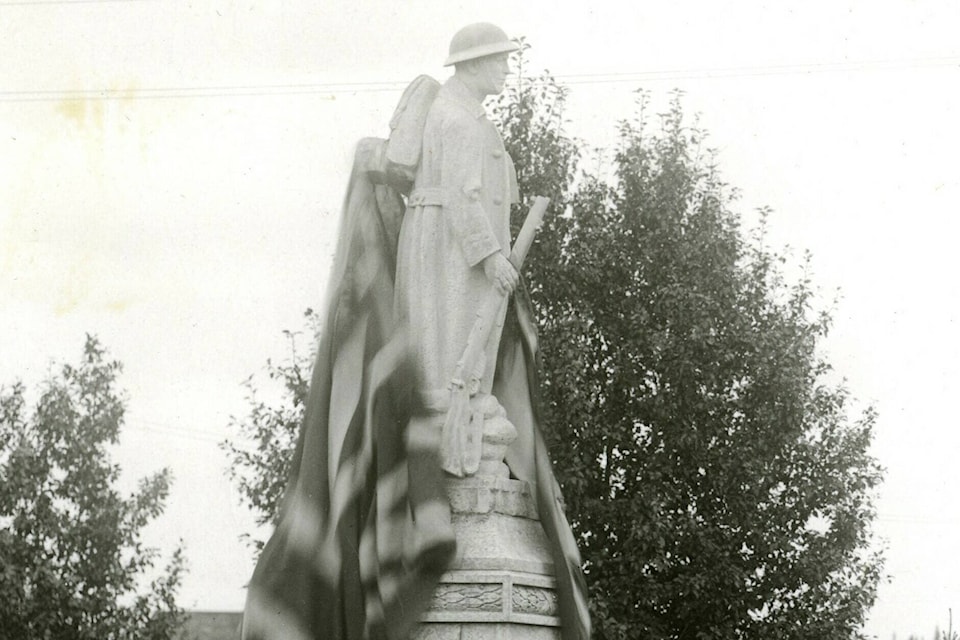One hundred years ago, on September 15, 1922, Lord Byng of Vimy, the Governor General of Canada, officially unveiled the Red Deer Cenotaph, the community memorial to those who had served and those who had lost their lives in the First World War.
Having Lord Byng do the official unveiling had great symbolic significance. This was not only because of Byng’s position as Governor General, but also because he had been the commander of the Canadian Corps at the Battle of Vimy Ridge, one of the most noted Canadian victories of the First World War.
Julian Hedworth George Byng was born on September 11, 1862, at Wrotham Park in Hertfordshire, England, son of George Byng, 2nd Earl of Strafford, and Harriett Cavendish, daughter of Charles Cavendish, 1st Baron Chesham. He was nicknamed Bungo, to distinguish him from Byngo and Bango, his older brothers.
He was educated at Eton College, but was an undistinguished student, being quite uninterested in academics. When he turned 17, he joined the militia, becoming a second lieutenant in the 2nd (Edmonton) Royal Middlesex Rifles. He was soon promoted.
Following a personal interest in his career by the Prince of Wales, he became a member of the 10th Royal Hussars, the Prince’s own regiment. After service in India, he joined the Sudan campaign in Northern Africa where he distinguished himself in battle.
He attended Staff College to improve his military skills and knowledge. It also gave him a wide circle of influential friends and colleagues. In the years following graduation, he obtained a number of promotions.
He distinguished himself in service during the Second Boer War, ending up as brevet colonel. In April 1902, he married Evelyn Moreton whose father had served as a comptroller at Rideau Hall, the vice regal residence in Ottawa.
When the First World War broke out, Byng saw active service as a senior officer. He distinguished himself in the successful withdrawal from the otherwise disastrous Battle of Gallipoli. With the rank of lieutenant general, he became the British commander of the Canadian Corps in June 1916.
His greatest glory came in April 1917 when he led the Canadian victory at Vimy Ridge. That military milestone led to his promotion as the commander of the British Third Army (General Arthur Currie, a Canadian, becoming the new commander of the Canadian Corps).
After the War, Byng was elevated to the peerage, becoming Baron Byng of Vimy. In 1921, he was named the Governor General of Canada. It was a popular choice, particularly because of his very distinguished War record and his wife’s previous vice regal connections to Canada.
His popularity increased due to his active interest in things Canadian. He was the first Governor General to appoint Canadians as his aides-de-camp, one of whom was the future Governor General Georges Vanier. He donated the Governor General’s Cup for annual presentation at the Royal Agricultural Winter Fair.
Lord and Lady Byng loved hockey. In 1925, Lady Byng created a trophy which is presented annually to a distinguished player in the N.H.L.
While the office of Governor General was increasingly becoming ceremonial, Lord Byng created national controversy when he denied the recommendation of Prime Minister Mackenzie King to dissolve parliament in 1926 and invited Opposition Leader Arthur Meighan to form a government instead.
When the Meighan government soon fell, Mackenzie King successfully turned the incident into an election issue, and was returned as prime minister, albeit as head of a minority government.
Byng returned to Britain in the fall of 1926. He was named Viscount Byng of Vimy in 1928 and was appointed Commissioner of the Metropolitan Police. He undertook a number of significant reforms during his tenure, including improvements in discipline, retirement of inefficient senior officers and promotions based on merit rather than years of service.
Viscount Byng of Vimy retired in 1931. He passed away on June 6, 1935.
On Sunday, Sept. 25th, the Royal Canadian Legion Branch 35 will hold a ceremony to mark the centennial of the Cenotaph. Ceremonies will commence with a military parade at 10:45 am.
Michael Dawe is a Red Deer historian and his column appears on Wednesdays.
